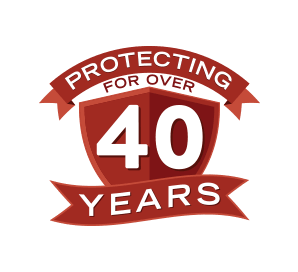Another season of Canadian summer pests is upon us. Every year, a multitude of people are faced with the problem of finding wasps around their property.
Wasps grow in population and get more aggressive in the heat, which is why being proactive is so important. Here are some things you can do to stop wasp nests from forming:
- Combine clove, geranium, and lemongrass essential oils with dish soap and spray the solution where wasps would likely build nests.
- Patch up any possible areas that wasps could enter your home to build a nest.
- Seal your garbage cans
- Check your property for signs of nests on a regular basis.
Taking action early on to prevent a pest infestation will save you the headache of dealing with an epidemic in the summer months.
In North America, there are over 4000 wasp species, but not all considered pests. The main three types of wasps to look out for are paper wasps, yellow jackets, and bald faced hornets. Queens of these breeds build small nests in the spring, about the size of a plum, and lay the first batch of eggs. These quickly develop into workers that continue the construction process. As the summer progresses, the nest will grow rapidly, up to the size of a watermelon or larger, to accommodate their growing population.
- Paper wasps construct easily visible nests, that resemble an upside down hydrangea, in trees, shrubs, or on the exterior of a home. Adult wasps will readily sting if they feel danger approaching their carefully-built nest. Fully-grown paper wasps are normally brown with yellow markings, although some species have red patterning.
- Yellow Jackets build large, spherical nests that are surrounded by a papery covering, and are commonly found within wall gaps or holes in the ground. Unlike paper wasps, who only build their nests in open air, yellow jackets will build above or below ground. Yellow jackets, as their name suggests, are typically yellow with black stripes. When disturbed, yellow jackets are quite aggressive, and can attack in large numbers. They are typically most aggressive in late summer, leading to an increase in yellow jacket stings.
- Bald faced hornets build nests that are covered in a papery shell in natural vacancies like tree stumps, or in voids within buildings. Bald faced hornets are brown with orange markings and are bigger than the average wasp.
Most serious stinging incidents occur when people attempt to eliminate nests without the proper training or equipment. Control and removal methods are different for each type of pest, so it is incredibly important to identify the pest correctly; we highly recommend that you hire a trained technician to avoid the threat of stings to you or your family. Upon identification, the technician will combine a collection of dust and aerosol products designed to terminate the pest.
For nests that are in the ground, the exterminator will use a dusting method. The dust should contain permethrin, which will be carried deep into the nest on the wasps’ backs and will eradicate all pests inside. For hanging nests, the exterminator will use an aerosol that contains tetramethrin and prallethrin, which will clear the sprayed space from wasps.
If you’ve got a nest, don’t wait! Go to https://actionpest.ca/ to get a quote today!






